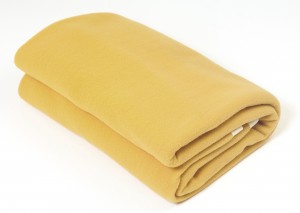Old Man Winter’s firm grip has many in the Midwest looking for ways to keep warm on these frigid nights and look to an electric blanket to stay warm and comfortable.

When purchasing and using an electric blanket, safety is the top concern. Indiana Electric Cooperatives has some tips to help you safely stay warm with your electric blanket this winter. The following are some things we recommend when purchasing, using, storing and disposing of an electric blanket.
Selecting
Knowing what to look for when picking out an electric blanket is the first step to keeping your family safe.
- Purchase your electric blanket from a reputable retailer.
- Only use blankets that have been approved by a nationally-recognized testing agency, such as Underwriters Laboratories (UL).
- Don’t buy second-hand blankets because they may be worn and may not meet current safety standards.
Safe Use
When using an electric blanket, safety is the top concern.
- Always read and follow the manufacturer’s instructions.
- Examine the blanket regularly for signs of wear or damage to make sure it’s safe for continued use. Look for cracks or breaks in wiring, plugs and connectors.
- As with any heating appliance, electric blankets should never be left unattended or used while sleeping.
- Turn off and unplug the blanket when it’s not in use and make sure the cords don’t create a tripping hazard.
- Electric blankets should be used only when it’s completely unfolded. Folded blankets can overheat. Tucking can pinch the heat-producing wires, which creates a fire hazard.
- Do not put anything, even a light bedspread or blanket, on top of an operating electric blanket. When covered by anything, including other bedding or pets, an electric blanket can overheat.
- Do not use pins to hold the blanket in place on the bed.
- Avoid use on adjustable beds because the cord and wires can become pinched.
Safe Storage
When your blanket is not in use, make sure you’re storing it properly.
- Loosely fold it and store it in a cool, dry place
- Do not use moth-proofing chemicals
- Do not place heavy items on top of it
Replacing
It’s time to consider replacing your electric blanket if it’s more than 10 years old or when you see any of the following signs, which indicate damage and a potential fire hazard.
- Fabric is worn or frayed.
- Scorch marks or discolored areas are visible on the fabric.
- Temperature control unit is making a buzzing sound when switched on and/or is emitting an odor.
- Wires are visible or poking through the fabric.
- The power cord is damaged.
- The connector fitted to the blanket is damaged or overheating.
Safe Disposal
Blankets should be disposed of at a recycling facility that accepts electric and electronic appliances.
Sources: Electrical Safety Foundation International, U.S. Consumer Product Safety Commission, Indiana Electric Cooperatives
When using an electric blanket, safety is the top concern.
- Always read and follow the manufacturer’s instructions.
- Examine the blanket regularly for signs of wear or damage to make sure it’s safe for continued use. Look for cracks or breaks in wiring, plugs and connectors.
- As with any heating appliance, electric blankets should never be left unattended or used while sleeping.
- Turn off and unplug the blanket when it’s not in use and make sure the cords don’t create a tripping hazard.
- Electric blankets should be used only when it’s completely unfolded. Folded blankets can overheat. Tucking can pinch the heat-producing wires, which creates a fire hazard.
- Do not put anything, even a light bedspread or blanket, on top of an operating electric blanket. When covered by anything, including other bedding or pets, an electric blanket can overheat.
- Do not use pins to hold the blanket in place on the bed.
- Avoid use on adjustable beds because the cord and wires can become pinched.
It’s time to consider replacing your electric blanket if it’s more than 10 years old or when you see any of the following signs, which indicate damage and a potential fire hazard.
- Fabric is worn or frayed.
- Scorch marks or discolored areas are visible on the fabric.
- Temperature control unit is making a buzzing sound when switched on and/or is emitting an odor.
- Wires are visible or poking through the fabric.
- The power cord is damaged.
- The connector fitted to the blanket is damaged or overheating.




